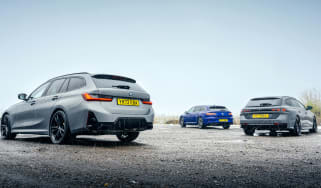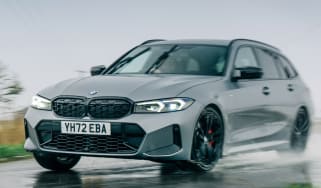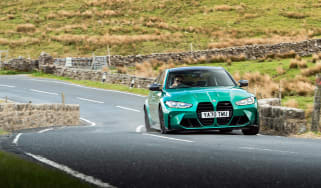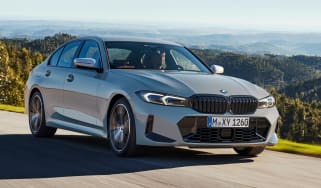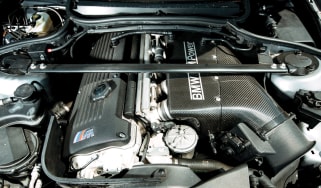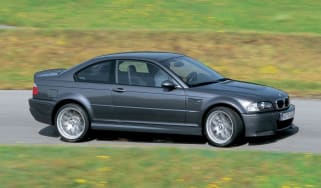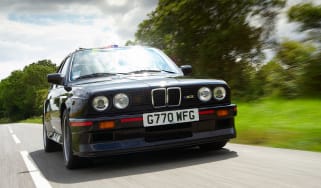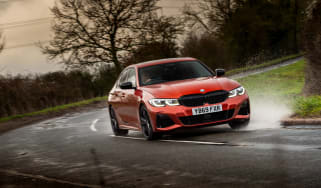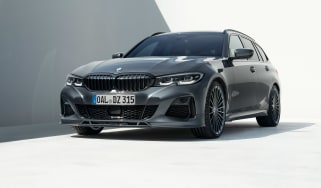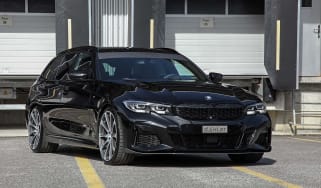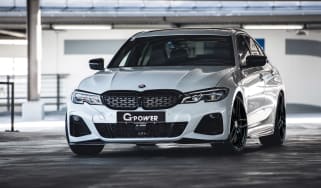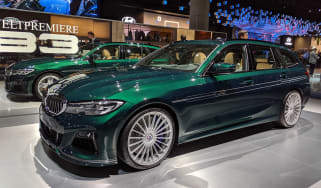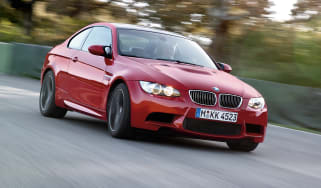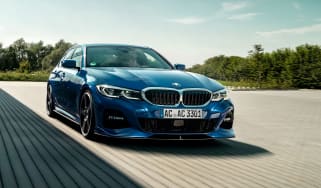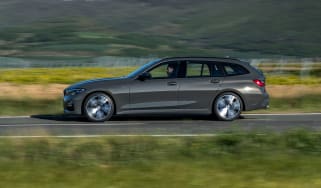BMW 3-series 2025 review – does it still reward the keen driver?
The 3-series is 50 years old this year, and it’s as compelling today as its ever been – none of its rivals combine tech, quality and driving dynamics quite so well
Half a century since the BMW 3-series first hit the road, the recipe that made it such as success back in 1975 still stands today. Polished dynamics, strong powertrains, great build quality and a premium image make it one of the class leaders, but it's up against tougher opposition than ever. Arch rivals in the form of the Mercedes C-Class and the Audi A5 keep raising the bar, but BMW has succeeded in refining the 3-series to make it one of the most rounded everyday cars available, while retaining an edge of sportiness over its rivals.
The current G20-series model was launched in 2019, before being facelifted in 2022 and further fettled in 2024. It now features BMW's latest raft of tech and a fresher design, as well as a streamlined engine line-up that – sadly for some – doesn't include diesel power. You're left with the four-cylinder 320i, plug-in hybrid 330e and turbocharged straight-six M340i – as well as the full-fat M3, of course.
Though the 3-series’ range is more limited than it used to be, the good news is that its chassis can still entertain, exhibiting the sort of confidence-inspiring balance that’s missing in many rivals. To drive, it remains a cut above most mid-sized saloons (and estates, in Touring form), apart from perhaps Alfa Romeo's aging Giulia. All things considered it's one of the most accomplished cars of its type.
BMW 3-series in detail
- Engine, gearbox and technical highlights – Four-cylinder petrol is dull, but 3-litre straight-six is excellent. All are auto-only
- Performance and 0-60mph time – All 3-series engines deliver strong performance, but the M340i xDrive is seriously quick
- Ride and handling – Standard suspension delivers an excellent ride but less chassis poise, while the more focused M Sport chassis can be too stiff
- MPG and running costs – The 3-series can be surprisingly frugal, with the 330e PHEV boasting an impressive all-electric range
- Interior and tech – The fundamentals are excellent in usual BMW style, and it now packs the firm’s latest infotainment tech
- Design – Safe rather than experimental styling ensures the 3-series is smart and inoffensive, but perhaps not as seductive as a Giulia
Price and rivals
The BMW 3-series range is split into Sport and M Sport models, with the M340i sitting above both. The cheapest 320i starts at £41,310, with the M Sport adding more aggressive design touches, sports seats, larger 18-inch alloys and a firmer chassis setup (among other details) for an extra £1250. The plug-in 330e, meanwhile, costs from £47,185 and £48,435 in Sport and M Sport spec respectively. The 369bhp M340i brings a huge leap in performance, a tuneful straight-six engine and unique chassis tuning for a much steeper price – £62,080 before options. Touring estate versions, meanwhile, command a c£2k premium.
For most buyers the choice of junior exec will be between the 3-series and its two closest rivals, the Audi A5 and the Mercedes-Benz C-class. In their latest incarnations both are worthy rivals that offer similar pricing and performance, but the 3-series has caught up where it was lacking before, mainly in terms of refinement and cabin technology. It’s better to drive than these rivals, too, and cheaper – the Merc starts at £46,175 in C200 spec, and the A5 at £43,385 in base Sport TFSI form.
But while the 3-series might still be the driver’s choice among its German rivals, it’s worth considering what the Italians have to offer: the Alfa Romeo Giulia. Now only available in petrol form with either a 276bhp four-pot or a twin-turbo V6 in the Quadrifolglio, it starts from £43,250 and puts up a real fight against the BMW in terms of dynamics. It’s quick, sharp and fluid across the ground, but where the Alfa lags behind is in its cabin – it looks and feels two generations older than the BMW’s, not coming near its tech and finishing standards.







